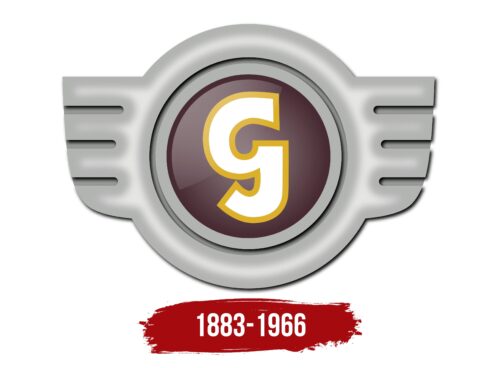The Glas logo embodies the dreams and broad opportunities that opened up to the manufacturer in the early years of the automotive era. Despite their compact size, the brand’s cars offered excellent speed and maneuverability, as reflected in the company’s emblem.
Glas: Brand overview
Hans Glas established Glas in 1883, starting as an agricultural machinery business in Dingolfing, Germany. In the early years of the 20th century, the company gradually shifted focus to the production of motorcycles and scooters.
The unveiling of Glas’s first automobile, the Goggomobil, marked a significant milestone for the company in 1950. The Goggomobil, a small two-seat microcar with a glass fiber body, was a major success, with sales surpassing 90,000 units.
Towards the mid-1950s, Glas pivoted to manufacturing larger, more mainstream sedans and coupes, complete with V8 and six-cylinder engines. These models included the 1004, 1700, and the 2600 V8.
However, Glas ran into financial difficulties by the onset of the 1960s. This crisis led to a takeover by BMW in 1966. BMW had a keen interest in acquiring Glas’s patents and engineering expertise.
By 1968, BMW had phased out the existing Glas models and integrated the company’s operations into its own. One of Glas’s significant contributions to automotive innovation was the development of the first timing belt-driven overhead camshaft engine, which was utilized in the Glas V8.
During the late 1950s, Glas employed around 10,000 people in its prime before it was eventually assimilated into BMW.
Meaning and History
What is Glas?
Since its inception in 1883, Hans Glas GmbH marked a transformative shift in German manufacturing, transitioning from agricultural machinery to motor scooters and automobiles. The company swiftly advanced to the vanguard of industrial innovation, established by brothers Hans and Andreas Glas in Dingolfing, Germany. Glas, the trailblazing automobile company, earned its reputation through groundbreaking patents and innovations. One of their most significant accomplishments was the launch of the world’s first timing belt with an overhead camshaft used in cars. This pioneering technology drew the interest of BMW, leading to their acquisition of Glas in 1966.
1883 – 1966
The Glas logo, used from 1883 to 1966, features a small winged wheel. The wings symbolize speed and movement, reflecting the company’s dynamic spirit and innovative approach to car manufacturing. The compact logo size highlights Glas’s specialty in small two-passenger minicars.
At the center of the wheel is a lowercase “g,” emphasizing Glas cars’ small size and unique identity. This design element represents the company’s name and focus on compact, economical vehicles. The lowercase “g” within the wheel serves as a recognizable emblem, reinforcing the brand’s commitment to efficiency and innovation.
The winged wheel signifies motion, agility, freedom, and progress, aligning with the brand’s ethos of creating practical, enjoyable vehicles. The logo’s compactness mirrors the cars’ compactness, reinforcing the brand’s specialization in minicars.
The minimalist design’s simple symbolism ensures it remains easily identifiable and memorable. Combining the winged wheel and the lowercase “g” creates a balanced and cohesive image, encapsulating Glas’s brand identity.




